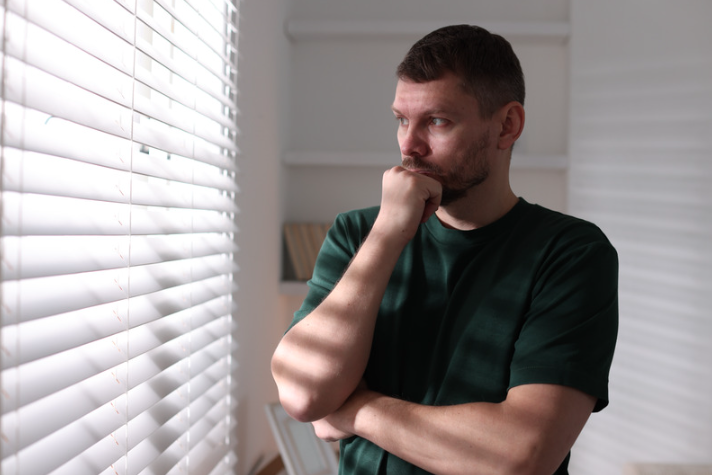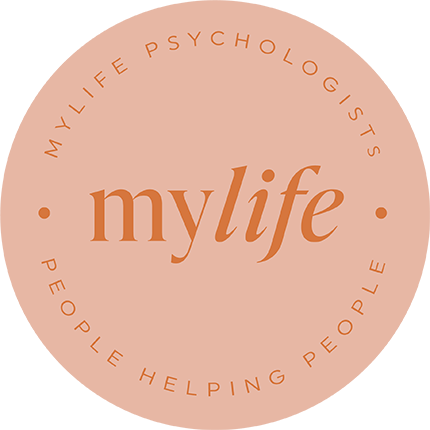Many people think of trauma as something that happens after a single, distressing event – such as a car accident, assault, or natural disaster. But for some, trauma is not one big event. Instead, it’s something that develops slowly over time through repeated experiences of fear, neglect, or instability during childhood.
This is known as developmental trauma.
Understanding developmental trauma helps explain why many adults continue to struggle with anxiety, emotional overwhelm, or relationship difficulties long after childhood has ended. It also helps us understand that these reactions are not signs of weakness – they are the body and brain’s ways of adapting to chronic stress.
What Is Developmental Trauma?
Developmental trauma refers to the lasting emotional, psychological, and physical effects of ongoing exposure to stressful or harmful experiences during childhood – especially when those experiences involve the people who were meant to provide safety and care.
Unlike a single traumatic event (such as a car accident), developmental trauma occurs repeatedly over time. It often happens within relationships – such as when a child experiences emotional neglect, verbal abuse, domestic violence, or inconsistent caregiving.
Because it happens during the years when the brain and nervous system are still developing, developmental trauma can shape how a person learns to think, feel, and relate to others. These patterns can persist into adulthood, even long after the danger has passed.
Is Developmental Trauma the Same as Childhood Trauma?
The terms developmental trauma and childhood trauma are closely related, but they have slightly different meanings:
- Childhood trauma refers to any traumatic event that happens during childhood. This could include accidents, natural disasters, medical procedures, or the death of a loved one.
- Developmental trauma focuses on trauma that happens within relationships — often in the family – and during key stages of emotional and brain development.
In other words, developmental trauma is a type of childhood trauma, but it specifically describes trauma that disrupts healthy emotional and relational development.
For example, a child who grows up in a home with ongoing emotional neglect or family violence may not have experienced one “big” traumatic event – but the repeated stress and fear can profoundly affect their sense of safety, self-worth, and ability to trust others.
What Causes Developmental Trauma?
Developmental trauma can arise from many different experiences. What they have in common is that they overwhelm a child’s ability to feel safe and supported, often in the context of caregiving relationships.
Common causes include:
- Emotional neglect: When a caregiver fails to notice, respond to, or validate a child’s emotional needs.
- Physical or emotional abuse: Experiencing fear, humiliation, or harm from a trusted adult.
- Exposure to domestic violence: Witnessing conflict or violence between parents or caregivers.
- Parental mental illness or substance use: Living with a caregiver who is unpredictable, emotionally unavailable, or unsafe.
- Loss or separation: Being removed from a primary caregiver, placed in foster care, or losing a parent through death or abandonment.
- Chronic stress and instability: Growing up in poverty, unsafe housing, or environments with ongoing stress and uncertainty.
Even when a child’s basic needs for food and shelter are met, repeated emotional neglect or fear can have significant developmental effects.
Children need consistent love, attention, and safety to build a secure sense of self and the ability to manage emotions. When those needs are unmet, the developing brain can adapt to survive in ways that make sense at the time – but may later lead to emotional and relational difficulties.
How Developmental Trauma Affects the Brain and Nervous System
One of the most significant impacts of developmental trauma is how it changes the developing brain and nervous system.
Children are biologically wired to depend on adults for safety. When caregiving relationships are unpredictable or frightening, the child’s stress-response system – responsible for detecting danger – becomes chronically activated.
Over time, this can lead to changes in how the brain functions and how the body reacts to stress.
-
The stress response stays “switched on”
The fight-flight-freeze system is designed to protect us from danger. But when a child lives in constant fear or unpredictability, this system stays switched on – even when there’s no real threat.
As a result, the body becomes highly sensitive to stress. Adults who experienced developmental trauma may:
-
- Startle easily or feel constantly “on edge”
- Have difficulty relaxing or feeling safe
- Experience anxiety, panic, or anger outbursts that seem to come from nowhere
-
The brain prioritises survival over learning
Chronic stress in childhood affects how different parts of the brain develop:
-
- The amygdala, which detects threat, becomes overactive.
- The hippocampus, which helps with memory and context, may become smaller or less efficient.
- The prefrontal cortex, which manages attention, planning, and emotional regulation, may be underdeveloped.
This means the brain is constantly focused on survival, rather than growth or connection. Concentration, problem-solving, and emotional control can all be affected.
-
Difficulty regulating emotions
Because the brain’s “alarm system” fires easily, and the “calming system” is underdeveloped, people with developmental trauma often struggle to manage strong emotions. They may swing between feeling numb and feeling flooded by anger, shame, or fear.
-
Disconnection from the body
When overwhelming experiences can’t be escaped, the nervous system may protect itself through dissociation – a sense of detachment from one’s body or emotions. While this helps children survive, it can make it harder in adulthood to notice and respond to bodily cues like hunger, pain, or tension.
-
Physical health consequences
Research shows that early, chronic stress can affect immune function, digestion, and cardiovascular health. Adults with developmental trauma are more likely to experience chronic pain, fatigue, and other health conditions linked to ongoing stress responses.
The good news is that the brain remains plastic – meaning it can change and heal. With therapy and supportive relationships, people can learn to calm their nervous system, form safe attachments, and rebuild a sense of trust in themselves and others.
How to Know if You’ve Been Impacted By Developmental Trauma
Because developmental trauma happens so early in life, many people don’t realise that their current struggles are connected to childhood experiences. They might think of themselves as “too sensitive,” “overreactive,” or “bad at relationships,” without understanding the roots of these patterns.
Here are some common signs of developmental trauma in adults:
Emotional and physical signs
- Feeling anxious, easily overwhelmed, or “on edge”
- Difficulty calming down after feeling upset
- Feeling emotionally numb, disconnected, or shut down
- Unexplained physical symptoms such as fatigue, pain, or digestive issues
- Sleep problems, nightmares, or chronic restlessness
Relationship patterns
- Struggling to trust others or feel close to people
- Fearing rejection or abandonment
- Staying in unhealthy relationships because being alone feels unsafe
- Feeling overly responsible for others’ emotions
- Finding it hard to express needs or set boundaries
Self-perception and identity
- Deep feelings of shame, guilt, or worthlessness
- Harsh self-criticism or perfectionism
- Feeling “different,” “defective,” or like you don’t belong
- Difficulty knowing who you are or what you want
Coping behaviours
- Using alcohol, drugs, food, work, or exercise to escape feelings
- Overworking, people-pleasing, or avoiding conflict
- Self-harm or self-sabotaging behaviours
It’s important to note that not everyone who experiences adversity in childhood develops trauma. Children’s responses depend on many factors – including temperament, support systems, and the presence of at least one safe, stable adult relationship.
However, if many of these signs feel familiar, it may be helpful to explore this further with a psychologist who understands trauma and attachment.
How Is Developmental Trauma Treated?
The good news is that healing from developmental trauma is possible. While recovery often takes time, people can learn to feel safer, more connected, and more in control of their emotions.
Because developmental trauma affects both the mind and body, treatment usually needs to address both.
Evidence-based therapies
Many people benefit from working with a trauma-informed clinical psychologist who understands the impact of early relational trauma. Effective therapies may include:
- Cognitive Behaviour Therapy (CBT): Helps identify and change unhelpful thoughts and behaviours that maintain anxiety, shame, or self-criticism.
- Schema Therapy: Focuses on long-standing patterns formed in childhood and helps people meet their emotional needs in healthier ways.
- Acceptance and Commitment Therapy (ACT): Encourages mindfulness, self-compassion, and values-based living rather than avoidance of painful emotions.
- Eye Movement Desensitisation and Reprocessing (EMDR): A structured therapy that helps process and re-store traumatic memories safely.
- Psychodynamic Therapy: Explores how early experiences and unconscious patterns shape current feelings and relationships. It helps people gain insight into long-standing emotional struggles and develop healthier ways of relating to themselves and others.
The most important part of any trauma therapy is feeling safe with your therapist. A strong, consistent, and compassionate therapeutic relationship helps rebuild trust and security that may have been missing in early life.
Additional supports and self-care
While therapy is central, healing also happens through daily practices and supportive environments. Helpful strategies include:
- Building safety and stability: Establish routines, safe spaces, and predictable relationships.
- Learning emotional regulation skills: Practice grounding, breathing, mindfulness, or sensory calming techniques.
- Connecting with supportive people: Nurture relationships with those who are kind, consistent, and accepting.
- Developing self-compassion: Recognise that your reactions are survival responses, not personal failures.
- Caring for your body: Regular exercise, adequate sleep, balanced nutrition, and limited alcohol can reduce stress reactivity.
- Creative and expressive outlets: Writing, art, music, or movement can help process emotions that are difficult to put into words.
Healing from developmental trauma takes time, but people can and do recover. With support, it’s possible to build a greater sense of calm, connection, and confidence in everyday life.
Seeking Professional Help
If you recognise yourself in some of what you’ve read here, know that help is available – and you don’t need to go through it alone.
At MyLife Psychologists, our team of Clinical Psychologists are experienced in working with adults who have experienced childhood or developmental trauma. We use evidence-based, trauma-informed approaches such as CBT, Schema Therapy, Psychodynamic Therapy, ACT, and EMDR to help clients process the past and build a more grounded and meaningful life.
Taking the first step toward support can feel daunting, but it’s also a powerful act of self-care. Healing begins when you feel safe enough to talk about what happened and supported enough to believe that things can be different.
If you’d like to explore whether therapy may be right for you, get in touch to book a free 15-minute consultation with our Care Coordinator to discuss your needs and connect with the right psychologist for you.
Final Thoughts
Developmental trauma is more common than many people realise. It can shape how you see yourself and the world – but it doesn’t have to define your future.
With the right understanding, care, and therapeutic support, people can learn new ways to feel safe, connected, and at peace. Healing is not about forgetting what happened, but about learning that you are safe now – and that you deserve to live with calm, confidence, and connection.
References and Resources
- Blue Knot Foundation – National Centre of Excellence for Complex Trauma. https://blueknot.org.au
- Emerging Minds – Resources for families and professionals on child development and trauma. https://emergingminds.com.au
- Australian Institute of Family Studies – The Effects of Trauma on Brain Development in Children. https://aifs.gov.au
- Transforming Mental Health – Developmental Trauma Explained (2024). https://transformingmentalhealth.org.au/developmental-trauma
- Queensland Health – Developmental Trauma Factsheet. https://www.health.qld.gov.au
- Phoenix Australia: Centre for Posttraumatic Mental Health – Guidance for trauma recovery. https://www.phoenixaustralia.org







